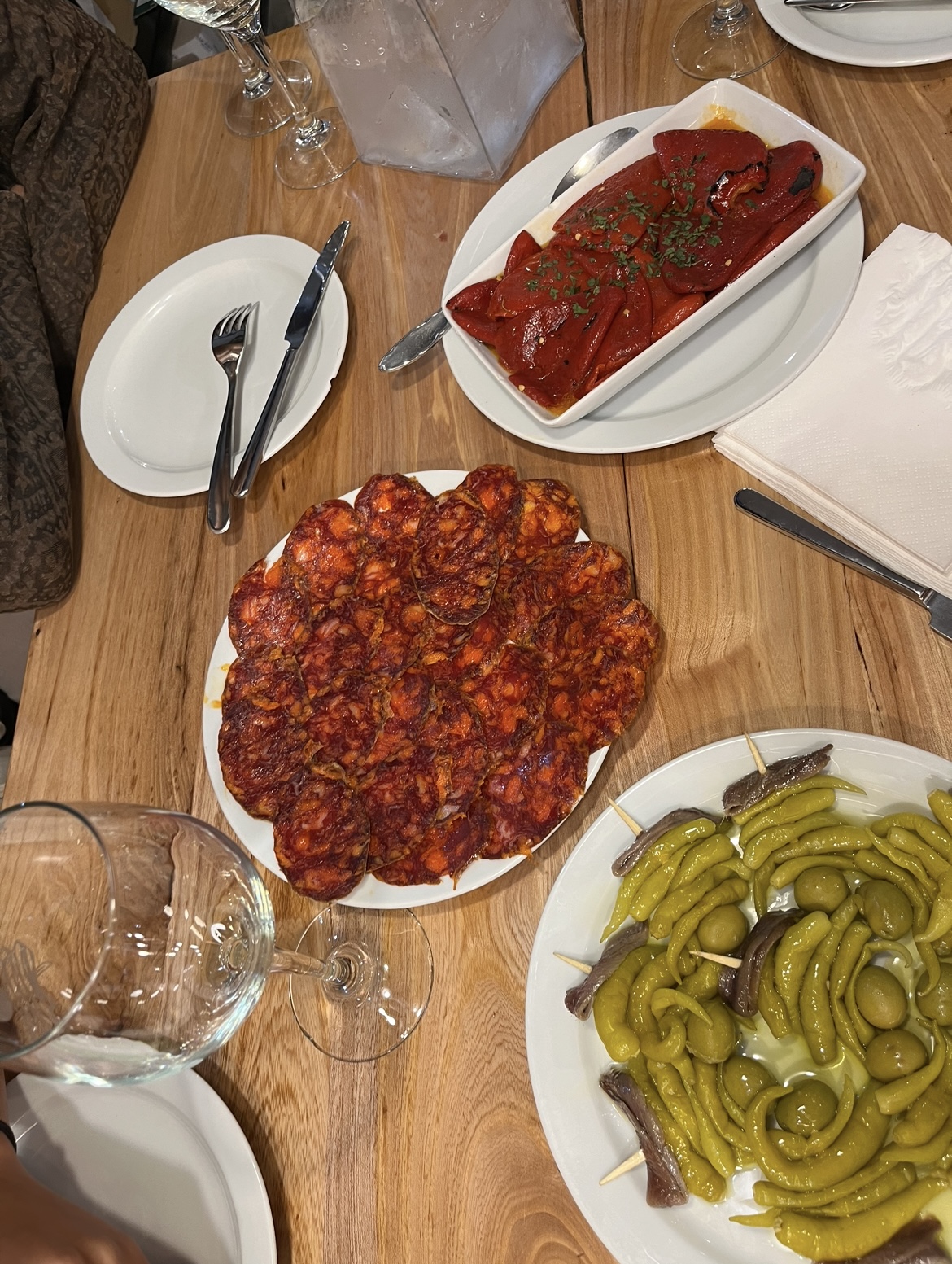My Experience So Far
I have never felt so lucky to be able to be immersed in a culture so independent to my own. My day started as I watched the sunrise at Playa de La Concha with my new friends. I am sure the bond we have and will continue to develop throughout this trip will last a lifetime and more. As we gathered around to kick off our first weekend and a new day in this beautiful country, we reflected on our first week and our favorite memories we have had so far. Although we had very challenging experiences, as is expected in international travel, we have been able to come together and find support and camaraderie to combat obstacles such as culture shock, language barriers, jet lag and homesickness. The time in Donastia feels warped as in if we were experiencing a movie. The days feel long but the weeks are quite short. I have seen first hand how we have all started to grow as people, as well as how close we have started to get to each other.
Bonding With My Peers
It have found it important to look for ways to ground myself and create a new sense of home and belonging. The most valuable aspect which helped me has been my connections with my peers. Small things such as borrowing clothes or hair tools, getting ready together, “family dinners”, and even getting lost in the city has unified us as a group. From calling Muriel in the mornings to walk down to breakfast together, the many Venmo transactions between Paige and I, and ending my days by swimming at the closest beach with Kathryn.
Wine Tasting
To continue on with the day, we had a group outing to Talai Berri Txakoli Winery. It is important to understand what txakoli wine is considering it is most popular in the Basque Country. It is a white wine, however, it differs from others because it is sparkling, or as the locals say it, “it has bubbles”. Previous to the experience I was not familiar with the characteristics of what made txakoli unique.
When the tour started we were met by the most genuine and polite lady who radiated warm and welcoming energy. She began to explain how she was the owner and the winery had been passed down to her by her ancestors. It has been in her family for fove generations now. When we asked if she had children which she planned to pass this down further, she explained that although she does, they do not seem to be interested in participating in the family business. To which we joked saying there were fifteen of us to pick for adoption.
She walked us through the the winery, the first place to which she showed us was the beautiful entrance which met us with breathtaking views that I had never seen before in my life despite my many years of travel. She began to explain how they produce around 900 bottles every year after picking the grapes. These bottles are so popular that they sell out within weeks. They even export to the United States of America. She also went into depth into the struggles which the previous generations in her family faced as they first began the sparkly white wine production. They could not keep the correct temperature due to the lack of equipment and technology of the time period which became very challenging to maintain the quality of the product. Although the weather was not as expected, we got the best of it. I feared that during our drive there we were going to be in the rain, and we weren’t going to be able to take pictures, but the weather cleared out perfectly in able to let us enjoy some time outside and try all the different wines.
The Language Barrier
My biggest challenge throughout this trip has been trying to adapt to the Spanish language when spoken by the locals. Although I am fluent in Brazilian Portuguese as it is my first and native language, which helps me understand due to its wide similarities, it is still wildly different. Whenever I attempt to speak in Spanish, I end up speaking in Portuguese instead which confused the locals quite a lot. I have found that to be surprising due to the fact when people speak in Spanish with me, most of the time, I am able to understand, especially if they speak slowly.
As always, I end my day eagerly awaiting what tomorrow shall bring, because when in Spain: expect the unexpected!




